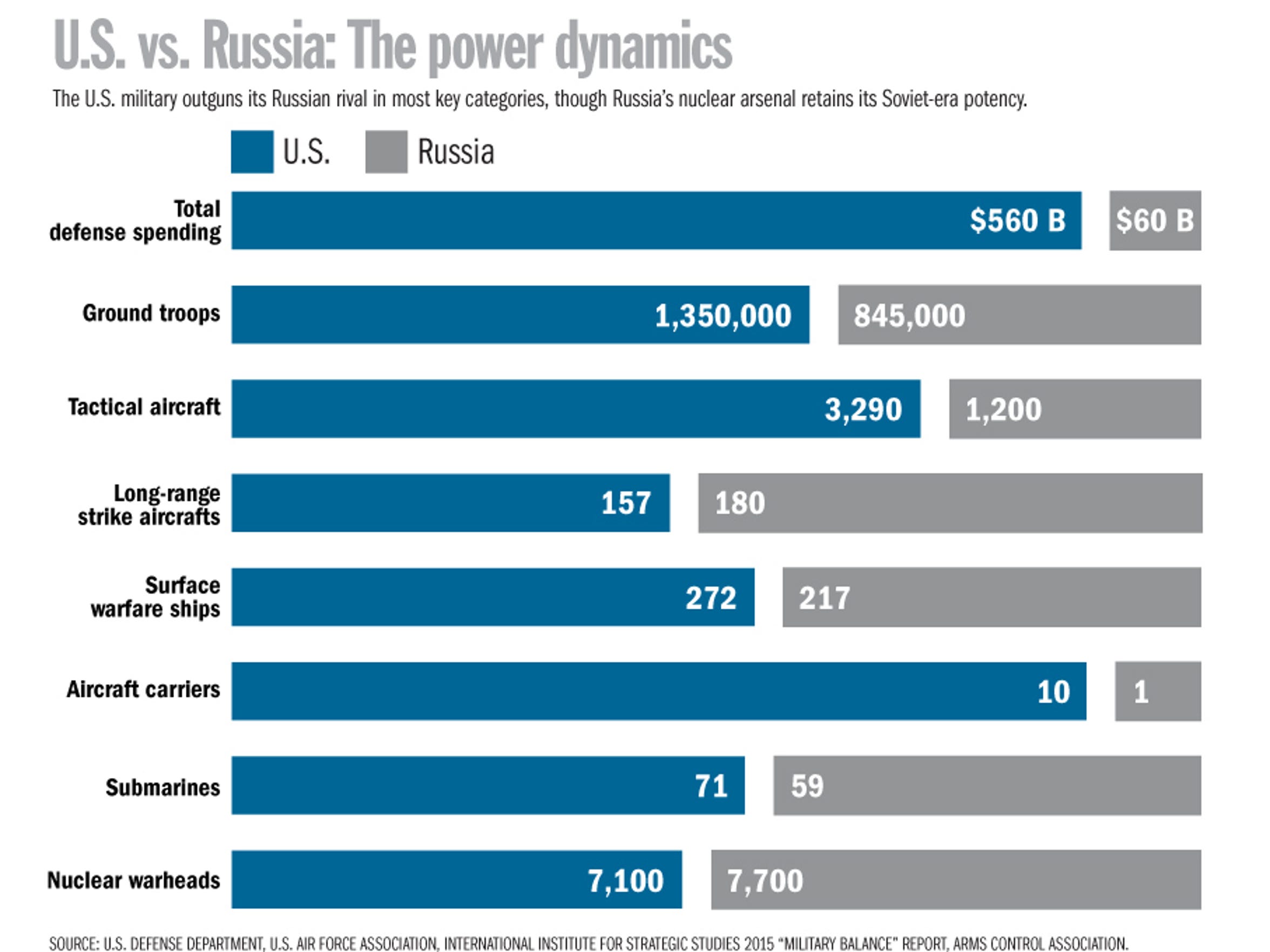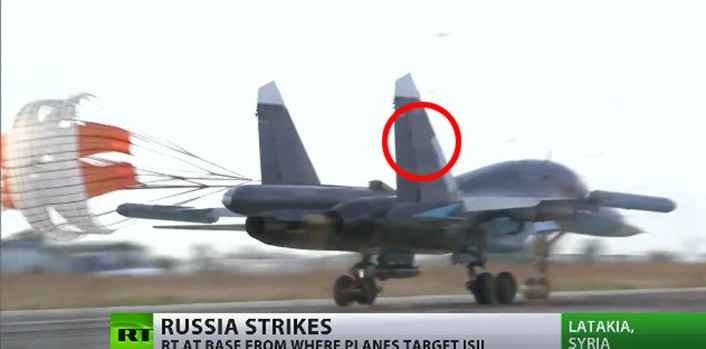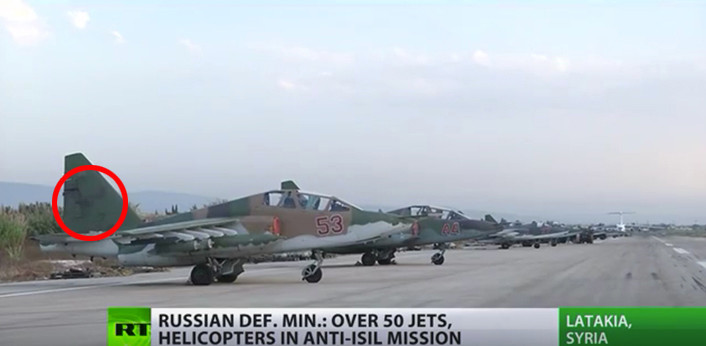CHISINAU, Moldova (AP) — Over the pulsating beat at an exclusive nightclub, the arms smuggler made his pitch to a client: 2.5 million euros for enough radioactive cesium to contaminate several city blocks.
It was earlier this year, and the two men were plotting their deal at an unlikely spot: the terrace of Cocos Prive, a dance club and sushi bar in Chisinau, the capital of Moldova.
“You can make a dirty bomb, which would be perfect for the Islamic State,” the smuggler said. “If you have a connection with them, the business will go smoothly.”
But the smuggler, Valentin Grossu, wasn’t sure the client was for real — and he was right to worry. The client was an informant, and it took some 20 meetings to persuade Grossu that he was an authentic Islamic State representative. Eventually, the two men exchanged cash for a sample in a sting operation that landed Grossu in jail.
The previously unpublicized case is one of at least four attempts in five years in which criminal networks with suspected Russian ties sought to sell radioactive material to extremists through Moldova, an investigation by The Associated Press has found. One investigation uncovered an attempt to sell bomb-grade uranium to a real buyer from the Middle East, the first known case of its kind.
In that operation, wiretaps and interviews with investigators show, a middleman for the gang repeatedly ranted with hatred for America as he focused on smuggling the essential material for an atomic bomb and blueprints for a dirty bomb to a Middle Eastern buyer.
In wiretaps, videotaped arrests, photographs of bomb-grade material, documents and interviews, AP found that smugglers are explicitly targeting buyers who are enemies of the West. The developments represent the fulfillment of a long-feared scenario in which organized crime gangs are trying to link up with groups such as the Islamic State and al-Qaida — both of which have made clear their ambition to use weapons of mass destruction.
The sting operations involved a partnership between the FBI and a small group of Moldovan investigators, who over five years went from near total ignorance of the black market to wrapping up four sting operations. Informants and police posing as connected gangsters penetrated the smuggling networks, using old-fashioned undercover tactics as well as high-tech gear from radiation detectors to clothing threaded with recording devices.
But their successes were undercut by striking shortcomings: Kingpins got away, and those arrested evaded long prison sentences, sometimes quickly returning to nuclear smuggling, AP found.
For strategic reasons, in most of the operations arrests were made after samples of nuclear material had been obtained rather than the larger quantities. That means that if smugglers did have access to the bulk of material they offered, it remains in criminal hands.
The repeated attempts to peddle radioactive materials signal that a thriving nuclear black market has emerged in an impoverished corner of Eastern Europe on the fringes of the former Soviet Union. Moldova, which borders Romania, is a former Soviet republic.
Moldovan police and judicial authorities shared investigative case files with the AP in an effort to spotlight how dangerous the black market has become. They say a breakdown in cooperation between Russia and the West means that it is much harder to know whether smugglers are finding ways to move parts of Russia’s vast store of radioactive materials.
“We can expect more of these cases,” said Constantin Malic, one of the Moldovan investigators. “As long as the smugglers think they can make big money without getting caught, they will keep doing it.”
The FBI and the White House declined to comment. The U.S. State Department would not comment on the specifics of the cases.
“Moldova has taken many important steps to strengthen its counter nuclear smuggling capabilities,” said Eric Lund, spokesman for the State Department’s bureau in charge of nonproliferation. “The arrests made by Moldovan authorities in 2011 for the attempted smuggling of nuclear materials is a good example of how Moldova is doing its part.”
Wiretapped conversations exposed plots that targeted the United States, the Moldovan officials said. In one case, a middleman said it was essential the smuggled bomb-grade uranium go to Arabs, said Malic, an investigator in all four sting operations.
“He said: ‘I really want an Islamic buyer because they will bomb the Americans.'”
___
“HAVE YOU EVER HEARD OF URANIUM?”
Malic was a 27-year-old police officer when he first stumbled upon the nuclear black market in 2009. He was working on a fraud unit in Chisinau, and had an informant helping police take down a euro counterfeiting ring stretching from the Black Sea to Naples, Italy.
The informant, an aging businessman, casually mentioned to Malic that over the years, contacts had periodically offered him radioactive material.
“Have you ever heard of uranium?” he asked Malic.
Malic was so new to the nuclear racket that he didn’t know what uranium was, and had to look it up on Google. He was horrified — “not just for one country,” he said, “but for humanity.”
“Soon after, the informant received an offer for uranium. At about that time, the U.S. government was starting a program to train Moldovan police in countering the nuclear black market, part of a global multi-million dollar effort.
In Malic’s first case, three people were arrested on Aug. 20, 2010, after a sample of the material, a sawed-off piece of a depleted uranium cylinder, was exchanged for cash. That kind of uranium would be difficult to turn into a bomb.
Authorities suspected, but couldn’t prove, that the uranium had come from the melted down Chernobyl reactor in Ukraine, Malic said.
Malic transported the seized radioactive material in a matchbox on the passenger seat of his car. It did not occur to him that the uranium should have been stored in a shielded container to protect him from possible radiation.
When FBI agents came to collect it, they were stunned when he simply proffered the matchbox in his uncovered hand: “Take it,” Malic said.
“Madman!” the American officers exclaimed.
The uranium, fortunately, turned out not to be highly toxic.
___
PLUTONIUM FOR FREE
Several months later, a former KGB informant, Teodor Chetrus, called Malic’s source, the Moldovan businessman. Chetrus told him he had uranium to sell, but was looking for a Middle Eastern buyer.
Unlike Malic’s first case, this one involved highly enriched uranium, the type that can be used to make a nuclear bomb.
Smarter and more cautious than the members of the previous gang, Chetrus was a bit of a paradox to the investigators. He was educated and well dressed, yet still lived in his dilapidated childhood farmhouse in a tiny village on Moldova’s border with Ukraine.
In many of the smuggling cases, the ringleaders insulated themselves through a complex network of middlemen who negotiated with buyers in order to shield the bosses from arrest. In this case, Chetrus was the go-between.
But he had his own agenda. Chetrus clung to a Soviet-era hatred of the West, Malic said, repeatedly ranting about how the Americans should be annihilated because of problems he thought they created in the Middle East.
“He said multiple times that this substance must have a real buyer from the Islamic states to make a dirty bomb,” Malic said.
Chetrus and the informant hammered out a deal to sell bomb-grade uranium to a “buyer in the Middle East” over months of wiretapped phone calls and meetings at Chetrus’ house.
The informant would show up with a recording device hidden in a different piece of clothing each time. On the other side of the road would be Malic, disguised as a migrant selling fruit and grains from a van — watching the house for signs of trouble.
In one early phone call, the informant pressed Chetrus to find out whether he had access to plutonium as well as uranium, saying his buyer had expressed interest, according to wiretaps. But Chetrus was suspicious, and insisted that before big quantities of either substance could be discussed, the buyer had to prove that he was for real and not an undercover agent.
Chetrus’ boss decided to sell the uranium in installments, starting with a sample. If the buyers were plants, he reasoned, the police would strike before the bulk of the uranium changed hands — an acceptable risk.
“I have to tell you one thing,” Chetrus told the informant in a wiretapped phone call. “Intelligence services never let go of the money.”
Eventually they worked out the terms of a deal: Chetrus would sell a 10-gram sample of the uranium for 320,000 euros ($360,000). The buyer could test it and if he liked what he saw, they could do a kilogram a week at the same rate — an astonishing 32 million euros every time until the buyer had the quantity he wanted. Ten kilograms of uranium was discussed — about a fifth of what was used over Hiroshima.
The two later met in the dirt courtyard of Chetrus’s house to discuss plutonium. The informant had a video camera hidden in his baseball cap. Chetrus can be seen in an army-green V-neck, talking animatedly as a rooster squawks in the background.
“For the plutonium,” Chetrus said, “if they prove they are serious people, we will provide the sample for free. You can use a small amount to make a dirty bomb.”
He spread his hands wide. Then waved them around, as if all before him was laid to waste.
Malic found the video chilling. “I was afraid to imagine what would happen if one of these scenarios happened one day.”
___
A REAL BUYER IN SUDAN
The man behind the bomb-grade uranium deal was Alexandr Agheenco, known as “the colonel” to his cohorts. He had both Russian and Ukrainian citizenship, police said, but lived in Moldova’s breakaway republic of Trans-Dniester.
A separatist enclave that is a notorious haven for smuggling of all kinds, Trans-Dniester was beyond the reach of the Moldovan police.
In a selfie included in police files, the colonel is balding, mustachioed, and smiling at the camera.
In June 2011, he arranged the uranium swap. He dispatched a Trans-Dniester police officer to smuggle the uranium to Moldova, according to court documents. At the same time, he sent his wife, Galina, on a “shopping outing” across the border to the capital.
Her job was to arrange a handoff of the uranium to Chetrus.
Galina Agheenco arrived in downtown Chisinau in a Lexus GS-330, parking near a circus. She met the police officer, who handed her a green sack with the uranium inside.
Meanwhile, the informant and Chetrus, sporting a dark suit and striped tie, pulled up at the Victoriabank on the city’s main drag in a chauffeur-driven gray BMW X5. Inside the bank, Chetrus inspected a safe deposit box with 320,000 euros, court documents show. He counted the bills and used a special light to check whether they were marked.
Satisfied, Chetrus went to collect the uranium package from the Lexus, where the colonel’s wife had left it. When he turned it over to the informant, the police pounced.
The bust, captured on video, shows officers in balaclavas forcing Chetrus to his knees and handcuffing him. Galina was arrested, too.
But the police officer-turned-smuggler managed to escape back to Trans-Dniester, where he and the colonel could not be touched by Moldovan police.
The arrests took Malic by surprise. He and the informant had been told that police would allow the sample exchange to go forward, so they could later seize the motherlode of uranium and arrest the ringleaders.
Malic was furious. Instead of capturing the gang leaders intent on selling nuclear bomb-grade material to terrorists, his Moldovan bosses had jumped the gun.
“What they did was simply create a scene for the news media,” Malic said. “We lost a huge opportunity to make the world safer.”
Tests of the uranium seized confirmed that it was high-grade material that could be used in a nuclear bomb. The tests also linked it to two earlier seizures of highly enriched uranium that investigators believed the colonel was also behind.
A search of Chetrus’ house showed just how dangerous the smugglers were. After police made their arrests in Chisinau, Malic combed through documents in the farmhouse.
He found the plans for the dirty bomb. Worse, there was evidence that Chetrus was making a separate deal to sell nuclear material to a real buyer.
Investigators found contracts made out to a Sudanese doctor named Yosif Faisal Ibrahim for attack helicopters and armored personnel carriers, government documents show. Chetrus had a copy of Ibrahim’s passport, and there was evidence that Chetrus was trying to help him obtain a Moldovan visa. Skype messages suggested that he was interested in uranium and the dirty bomb plans.
The deal was interrupted by the sting, but it looked like it had progressed pretty far. A lawyer working with the criminal ring had traveled to Sudan, officials said. But authorities say they could not determine who was behind Ibrahim or why he was seeking material for a nuclear bomb. AP efforts to reach Ibrahim were unsuccessful.
Consequences for the smugglers were minimal. Galina Agheenco got a light 3-year sentence because she had an infant son; and Chetrus was sentenced to a 5-year prison term. Interpol notices were issued for the colonel and the Trans-Dniester policeman who got away.
Moldovan officials say there were indications from a foreign intelligence agency that the colonel fled with his infant son through Ukraine to Russia shortly after the bust.
The authorities don’t know if the colonel also took a cache of uranium with him.
“Until the head of the criminal group is sentenced and jailed, until we know for sure where those substances seized in Europe came from and where they were going to, only then will we be able to say a danger is no longer present,” says Gheorghe Cavcaliuc, the senior police officer who oversaw the investigation.
___
A COOL FACE, A POUNDING HEART
In mid-2014, an informant told Malic he had been contacted by two separate groups, one offering uranium, the other cesium. The Moldovan police went directly to the FBI, who backed up their operations.
Malic volunteered to work undercover, posing as an agent for a Middle Eastern buyer. He did not have much training, and struggled with his nerves, resorting to shots of vodka before each meeting. He went into them with no weapon — showing a cool face while taming a pounding heart.
The FBI fitted him with a special shirt that had microphones woven into the fabric, so that even a pat-down could not reveal that he was wired. They also set him up in a white Mercedes S-Class to look like a gangster.
It worked. At one point, the unwitting smuggler said in text messages obtained by the AP that his gang had access to an outdated Russian missile system capable of carrying a nuclear warhead. The man said he could obtain two R29 submarine-based missiles and provide technical background on how to use them.
Following the same script as in 2011, the team wrapped up the investigation after a sample of 200 grams of unenriched uranium was exchanged for $15,000 on Dec. 3, 2014. Six people were arrested, five got away.
What worried Malic was what appeared to be a revolving door of smugglers. Three criminals involved in the new case had been taken into custody following the earlier investigations. Two of them had served short sentences and immediately rejoined the smuggling network, helping the new ring acquire the uranium. A third criminal was none other than the man who drove Chetrus to make his uranium deal.
The investigators tracked the new uranium for sale to an address in Ukraine. Although they reported it to the authorities, they never heard back.
As Malic’s frustration grew, so did the danger to him and his colleagues.
Early this year, at the Cocos Prive nightclub in Chisinau, the stakes became apparent. The middleman, Grossu, warned that his cesium supplier was a retired FSB officer with a reputation for brutality.
If there was any trouble, Grossu told a wired informant, “They will put all of us against the wall and shoot us,” Malic recalled.
Grossu’s bosses wanted the cesium to reach the Islamic State. “They have the money and they will know what to do with it,” he said.
The sellers claimed to have a huge cache of cesium 137 — which could be used to make a dirty bomb. As in previous cases, they insisted that the buyers prove their seriousness by first purchasing a sample vial of less-radioactive cesium 135, which is not potent enough for a dirty bomb.
They were busted on Feb. 19. Grossu and two other men were arrested. The suspected FSB officer and the remaining cesium disappeared.
It is not clear whether the Moldovan cases are indicative of widespread nuclear smuggling operations.
“It would be deeply concerning if terrorist groups are able to tap into organized crimes networks to gain the materials and expertise required to build a weapon of mass destruction,” said Andy Weber, former U.S. assistant secretary of defense, who oversaw counter-proliferation until a year ago.
On May 28, the FBI honored Malic and his team at an awards ceremony for the two recent investigations. But by then the Moldovan police department had disbanded the team amid political fallout and police infighting.
Chetrus’ 5-year prison sentence was supposed to run into next year. But Chetrus’ sister said this summer that he had been released in December, which the AP confirmed.
He had served barely three years for trying to sell a nuclear bomb to enemies of the United States.






